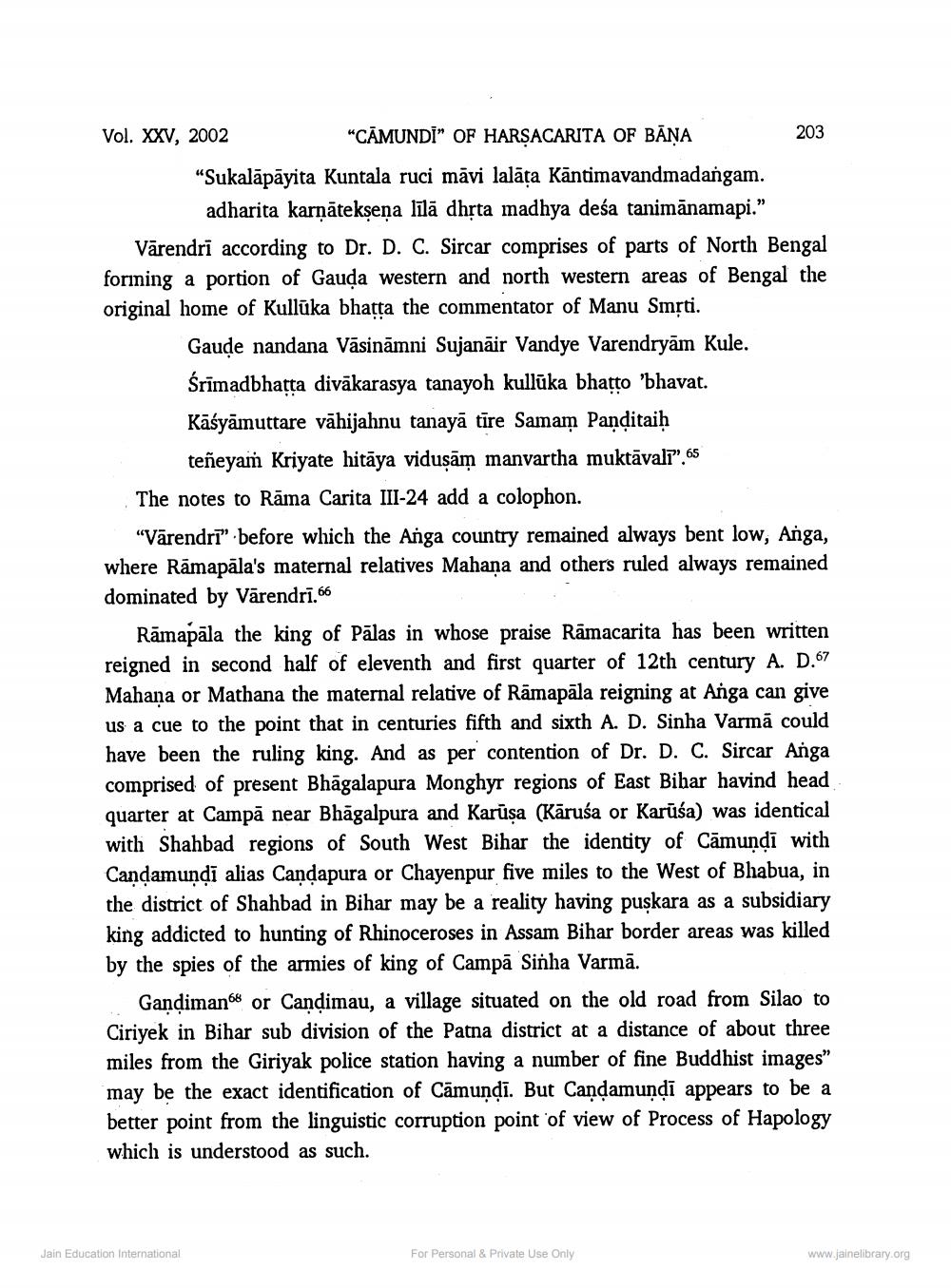________________
Vol. XXV, 2002 "CĀMUNDI" OF HARŞACARITA OF BĀŅA
203 "Sukalāpāyita Kuntala ruci māvi lalāta Kāntimavandmadangam.
adharita karņātekşeņa līlā dhrta madhya deśa tanimānamapi.” Vārendri according to Dr. D. C. Sircar comprises of parts of North Bengal forming a portion of Gauda western and north western areas of Bengal the original home of Kullūka bhatta the commentator of Manu Smrti.
Gaude nandana Vāsināmni Sujanāir Vandye Varendryām Kule. Srimadbhatta divākarasya tanayoh kullūka bhatto 'bhavat.
Kāśyāmuttare vāhijahnu tanayā tīre Samam Panditaih
teñeyam Kriyate hitāya vidusām manvartha muktavali”.65
The notes to Rāma Carita III-24 add a colophon.
"Värendri" before which the Anga country remained always bent low, Anga, where Rāmapala's maternal relatives Mahana and others ruled always remained dominated by Vārendrī.66
Rāmapāla the king of Pālas in whose praise Rāmacarita has been written reigned in second half of eleventh and first quarter of 12th century A. D.67 Mahana or Mathana the maternal relative of Rāmapāla reigning at Anga can give us a cue to the point that in centuries fifth and sixth A. D. Sinha Varmā could have been the ruling king. And as per contention of Dr. D. C. Sircar Anga comprised of present Bhāgalapura Monghyr regions of East Bihar havind head quarter at Campā near Bhāgalpura and Karūsa (Kāruśa or Karūsa) was identical with Shahbad regions of South West Bihar the identity of Cāmundi with Candamundi alias Candapura or Chayenpur five miles to the West of Bhabua, in the district of Shahbad in Bihar may be a reality having puşkara as a subsidiary king addicted to hunting of Rhinoceroses in Assam Bihar border areas was killed by the spies of the armies of king of Campā Sinha Varmā.
Gandiman66 or Candimau, a village situated on the old road from Silao to Ciriyek in Bihar sub division of the Patna district at a distance of about three miles from the Giriyak police station having a number of fine Buddhist images" may be the exact identification of Cāmundī. But Candamundi appears to be a better point from the linguistic corruption point of view of Process of Hapology which is understood as such.
Jain Education International
For Personal & Private Use Only
www.jainelibrary.org




